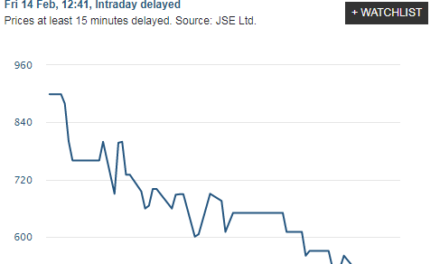
The central bank wails but credit remains easy
It is not typical for a business editor to advise readers not to overspend but this is exactly what I want to do.
One of the important metrics to measure key balances on the macro side of the economy is the so-called Private Sector Credit Extension. This measures the rate of growth in every month, compared to the same month a year ago. This is then expressed as an annualised value, in Namibia typically between 14% and 17%. When this metric earlier this year reached 19%, it scared the shytes out of the central bank, although it must be stated, that level was not unprecedented.
This metric is divided into credit for private households and credit to commercial enterprises. Both bigger divisions are in turn further defined into various types of credit or credit channels such as asset finance, instalment credit, mortgages, overdrafts and personal loans. Interestingly, on the private household side, two more categories were added in the past five years, i.e. credit extended as cash loans, and credit extended by retailers.
What it all comes down to is that there are many types of credit and many channels of credit, especially for private households, or consumers if you will.
Two years ago, total credit to private households already exceeded 91% of disposable income and the Bank of Namibia stirred up a small storm in a teacup when they suggested the growth in credit must be curbed and reduced. Granted, at that stage of causing the stink, their data was somewhat outdated, but I have no reason to believe that credit conditions for private consumers have abated. On the contrary, I have all the reasons to believe it has deteriorated.
Some two months ago, the Bank of Namibia again stirred the local market by announcing the first minor increase in interest rates, which was then assumed to be just the first step in a 24-month (at least) rising interest rate cycle.
The cue was taken from the South African Reserve Bank, which more recently, send out a very conflicting signal when it decided to keep interest rates on hold, citing abating inflation as the supporting consideration. Again, the local central bank simply aped the move, or lack of movement. But the bank’s objectives are not what concerns me.
I am worried over more mundane everyday occurrences where I see alternative channels of credit explode despite the already precarious position of the vast majority of Namibian households.
For instance, earlier this week I witnessed an incredible incident. An older women was lavishly shopping at Game, eventually filling four trolleys. Everything was bought on credit and Game was only too keen to extend her limit. But it then transpired she was buying all this stuff for a third party, and the retrieval of the debt was her own personal concern, and certainly not that of the retailer.
I am 100% sure the retailer is as chuffed as a cat in a pigeon loft, and I am also sure that this incident was not an isolated event. From my own observation I suspect there are thousands of shoppers doing the same, all at the same retailer.
If I then consider the vast number of retailers that offer goods on credit (account) and I see in my mind’s eye the long cues forming at the tills for approval, from now until Christmas, then I guess the additional alternative credit must run into many millions of not hundreds of millions of dollars.
Given that the fuel price is set make a substantial leap before Christmas to fund some or other desperately needed expansion of some or other fuel depot at the coast, I can only imagine the type of financial distress thousands of households will suffer in January.
This is when the sad reality will hit home. Then all those who overindulged during the holiday will have to face the question: What is most important? To have impressed the neighbours with trolley loads of groceries, or the kids with unappreciated cheap Chinese junk gifts? Or, most important, to be able to buy the items my children need to go back to school?
But I sense this is a futile line of thinking. If the uptakers of the credit had any consideration for their own and their children’s financial future, the credit would not have been accepted in the first place. We can carry on measuring credit into the finest detail. We can produce impressive reports analysing this and that type of credit and where it fits into the bigger PSCE framework, but we can not make the debt go away.
Living on credit is a mentality, not a relief measure.











































